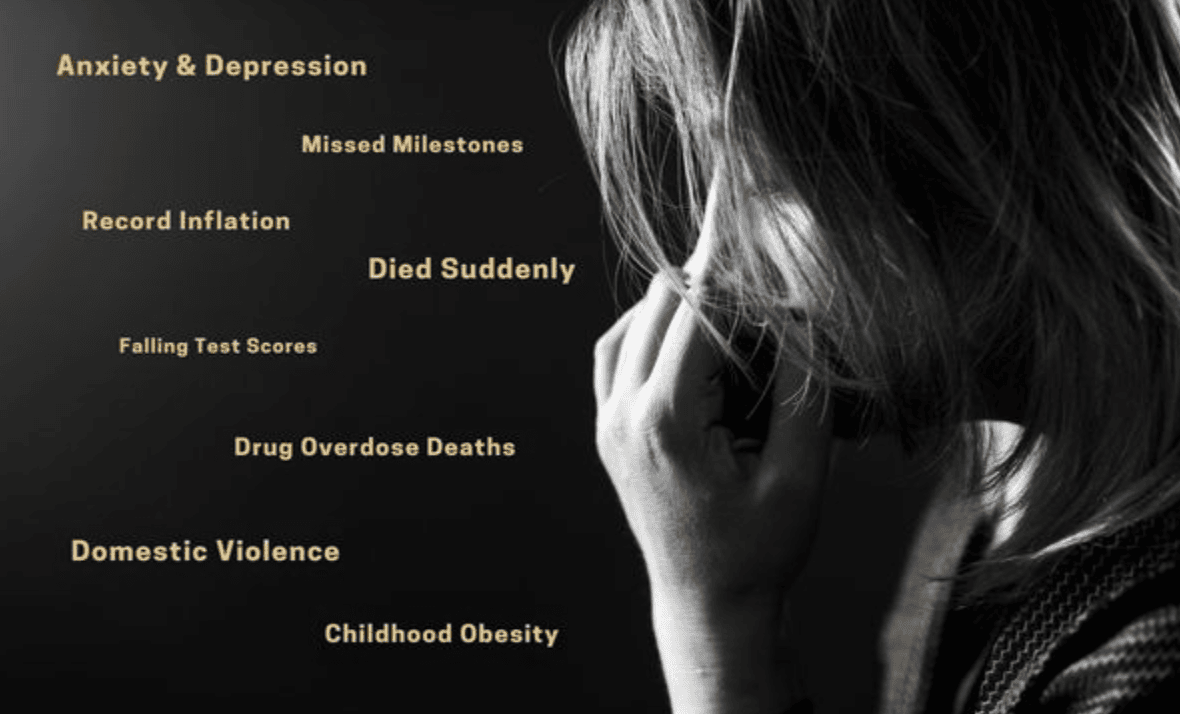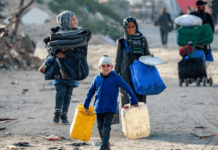From lc.org:
Fear infected the world on March 11, 2020, when the World Health Organization declared COVID-19 a “global pandemic.” From that moment, authorities scrambled to fast-track experimental vaccines, implement mask mandates and lock down whole populations in hopes of mitigating the spread. But at what cost?
Now we know that masks were detrimental, concealing facial expressions integral to human communication and causing speech delays in toddlers. Vaccine mandates violated basic ethical principles and forced countless jab-or-job ultimatums. Worse still, mandates nearly succeeded in dividing the global population into a two-tiered society, vaxxed and unvaxxed. Livelihoods were destroyed for those who, based on sincerely held beliefs, chose the hard road of noncompliance. Lockdowns closed schools, shuttered businesses and suspended in-person church services. They isolated humanity within walls of fear and confusion—ripping individuals away from the communities that gave them their sense of fundamental belonging.
If we look back, we’ll survey a global landscape littered with collateral damage.
The stats don’t lie, and hindsight is 20/20. COVID hindsight, moreover, is exceptional in that it not only has the power to correct vision retroactively, but it also has the power to open the eyes of the blind. From celebrity communicators like self-described “liberal” Bill Maher to “socialist turned red-pilled podcaster” Russell Brand to left-leaning media such as The Guardian and The Intercept, many are waking up to the facts. Not only did the pandemic response get botched, but it was corrupted by more insidious and self-serving factors like greed, power and control by authorities endowed with public trust.
To right the wrongs of the past two years, we must objectively assess domestic and international COVID-response policies. Did they work? Or did they unleash unintended societal contagions of worse consequence than COVID itself?
Here are eight facts to help you decide:
1. Worsening Anxiety and Depression
According to the World Health Organization (WHO), in the first year of the COVID-19 pandemic, anxiety and depression increased by 25% worldwide. Young people and women were hit hardest with WHO research citing that young people were “disproportionally at risk of suicidal and self-harming behaviors.” Other stressors included loneliness, fear of infection, suffering and death for oneself and for loved ones, grief and financial worries.
2. Missed Milestones
The negative impacts of COVID-19 response — namely lockdowns, mask mandates and related social isolation — adversely affected babies’ and toddlers’ development, especially in the area of social communications skills.
A new study published in October 2022 in the academic journal Archives of Disease in Childhood showed delayed communication milestones for babies born in the first three months of the pandemic. There was a 12.7% decrease in the ability of 1-year-old “lockdown babies” who could verbalize one definite and meaningful word compared to pre-pandemic babies.
In alignment with these findings is a 2021 study out of Brown University that reported “children born during the pandemic have significantly reduced verbal, motor, and overall cognitive performance compared to children born pre-pandemic.”
3. Record Inflation
We are witnessing the greatest supply-chain disruption of the modern era. COVID-induced business shutdowns paired with the Congress-approved $290 billion handouts of stimulus checks exacerbated a worker shortage that led to falling production and reduced supply. Now too many dollars are chasing too few goods. These economic conditions, along with other factors, have contributed to COVID-related inflation that surpassed a 40-year high of 9.1% in June.
4. “Died Suddenly”
Whether insurance companies, governments or funeral directors, it seems like everyone is trying to make sense of the extraordinary rise in sudden deaths. In 2021, all-cause mortality was up 40% among 18-49 year olds, and a major insurance group confirms these rates over pre-pandemic levels. All-cause U.S. mortality was up 29% in early 2022. The CDC reports more than 1 million excess deaths in the United States alone. While much of the mainstream media attributes the phenomenon to COVID itself, a New Zealand funeral director recently reported that 95% of corpses had received the COVID vaccination within two weeks of death.
5. Plummeting Test Scores
According to a 2021 report by UNICEF, 168 million children worldwide did not go to school due to COVID-19 lockdowns for almost an entire year. Although U.S school closures didn’t last that long, they lasted long enough to trigger serious deficits in learning. According to the National Center for Education Statistics, reading and math scores plummeted for age-9 students in 2022 compared to early 2020. Average scores in 2022 declined 5 points in reading and 7 points in math compared to 2020 — the largest decline in reading since 1990 and the first ever decline in math.
Elementary school students weren’t the only ones suffering. ACT college admission test scores hit a 30-year low as the class of 2022’s average ACT composite score was 19.8 out of 36, marking the first time since 1991 that the average score was below 20.
6. Rising Drug Overdose Deaths
Annual drug overdose deaths were nearly 50% higher in 2021 than in 2019, according to CDC data. While overdose deaths have been rising for years in the U.S., incidences surged amid the COVID-19 pandemic. In New York City alone, data shows that overdose deaths have nearly doubled from pre-pandemic levels in the first half of 2021, an alarming 78% increase from the same period in 2019 and up 28% from 2020.
7. Surging Domestic Violence
The United Nations published a survey report entitled “Measuring the Shadow Pandemic, Violence Against Women during COVID-19” on Nov. 24, 2021. The survey showed that violence against women had increased to unprecedented levels. The American Journal of Emergency Medicine stated that domestic violence cases increased by 25-33% globally. Could lockdowns be to blame? Case in point, China saw a 300% increase in domestic violence after locking down its population the first time. Even in the United States, early pandemic data shows a 10-30% increase in family violence reports.
8. Increased Childhood Obesity
The psychological toll of forced lockdowns and social isolation on children during COVID showed up in increased rates of weight gain. In fact, a study of 432,302 children ages 2 to 19 found the rate of body mass index (BMI) increase nearly doubled during the COVID-19 pandemic compared to a pre-pandemic period. Children with obesity and younger school-aged children were most susceptible to this increase.
Disclaimer: We at Prepare for Change (PFC) bring you information that is not offered by the mainstream news, and therefore may seem controversial. The opinions, views, statements, and/or information we present are not necessarily promoted, endorsed, espoused, or agreed to by Prepare for Change, its leadership Council, members, those who work with PFC, or those who read its content. However, they are hopefully provocative. Please use discernment! Use logical thinking, your own intuition and your own connection with Source, Spirit and Natural Laws to help you determine what is true and what is not. By sharing information and seeding dialogue, it is our goal to raise consciousness and awareness of higher truths to free us from enslavement of the matrix in this material realm.
 EN
EN FR
FR


























